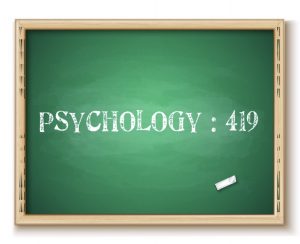
Psychology is defined as the scientific study of the mind and behavior. So what does that have to do with countertops? We are discussing the way that your countertops make you feel! Different shades play a role in influencing mood and emotion. In 1666, English scientist, Isaac Newton discovered that when pure white light passes through a prism, it separates into all of the visible colors. He also noted that although colors cannot be separated, they can be combined to form other colors. This initial discovery gave way to color psychology. Researchers and experts have made a few important discoveries and observations about the psychology of color and the effect it has on moods, feelings, and behaviors. That being said, it is important to choose countertop shades that have a positive influence on your mental state.
Black
Black can evoke positive associations, including attractiveness and elegance. The color is often seen as a sign of sophistication. That is why so many people choose black clothing when attending a fancy event. It is also why high-end brands tend to utilize black in their logos. On the other hand, the color black is used in culture to symbolize all things negative. Throughout history, this color has been linked to death, evil, and all things bad. Your personal association with the color black dictates how seeing it in your countertops will make you feel.
White
White represents purity or innocence in many cultures. White is bright and can create a sense of space or add highlights. That is why designers often use the color white to make rooms seem larger and more spacious. White can convey a sense of cleanliness, freshness, and simplicity. Some even view this color as a blank slate, symbolizing a new beginning. However, others see white as cold, bland, and sterile. If not careful, a completely white room can feel unwelcoming.
Grey
Grey represents neutrality and balance. Its color meaning most likely comes from being the shade between black and white. However, grey can evoke negative associations for some. This color is sometimes used to represent a dullness or depression. Despite some negative connotations, grey is a neutral color with the ability to beautifully decorate a space.
Red
Red is thought to be the most attention-grabbing color. Using red in a space can add a hint of passion and energy. This color can even make people feel a sense of power. Red does not only have this effect when seen in candy apple or cherry. It can evoke the same feelings when used as a rust-color stripe in granite, for instance.
Blue
Blue is a favorite color for many people. Because blue is so well liked, it is often viewed as a non-threatening color. Blue can conjure feelings of calmness or serenity. Interestingly, offices use blue because studies have supported that people are more productive in blue rooms. It is often described as peaceful, tranquil, and secure. In contrast, cultures use blue to reference sadness or aloofness. For instance, paintings produced by Picasso during his “blue period,” seem lonely or sad. Ask yourself if blue brings you positivity, or if you associate it with sadness.
Green
Green is a cool color that symbolizes nature and the natural world. Because of its strong associations with nature, it is often thought to represent tranquility, good luck, and health. There is actually a lot of science behind this color and how it influences one’s mind. Researchers have found that green can improve reading ability. Learning properties aside, the color green is often used in decorating for its calming effect.
Yellow
Think of objects and clothing meant to catch attention. Many of these are in yellow because yellow is hard to overlook. The brightness of yellow has energizing properties. Research has found that people surrounded by yellow report feeling more energized or excited. In turn, yellow has also been found to create feelings of frustration and anger. While it is considered a cheerful color, studies show that people are more likely to lose their tempers in yellow rooms and babies tend to cry more in yellow rooms. Do you see yellow as cheerful, or a source of temper?
Purple
Purple is used to denote royalty. It has the strongest electromagnetic wavelength, being just a few wavelengths up from x-rays and gamma rays. For this reason, it is often used in visual illusions such as the lilac chaser illusion. Purple is not for everyone, but it may give you a sense of royalty and luxury when added to your home/
Orange
Orange is associated with feelings of excitement, enthusiasm, and warmth. Like yellow, Orange is often used to catch attention, such as in traffic signs and advertisements. It is also why many sports teams use orange in their uniforms, mascots, and branding. Orange is also linked to autumn. Think of pumpkins and leaves when they turn. The color is heavily associated with Halloween in the United States, so it may give off a cartoonish feel. Do you want orange for a permanent fixture, or just a temporary, festive addition?
Brown
Brown is not commonly deemed as a person’s favorite color. However, brown is a natural color that can evoke a sense of strength and reliability. It is an earthy tone, often associated with resilience, dependability, security, and safety. To feel connected to the earth and at peace, brown may be the color choice for you.
Pink
